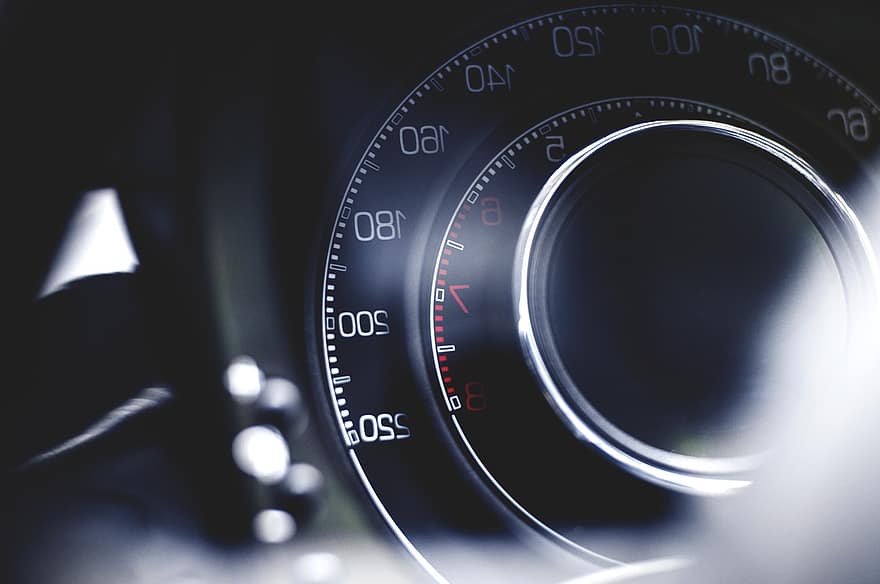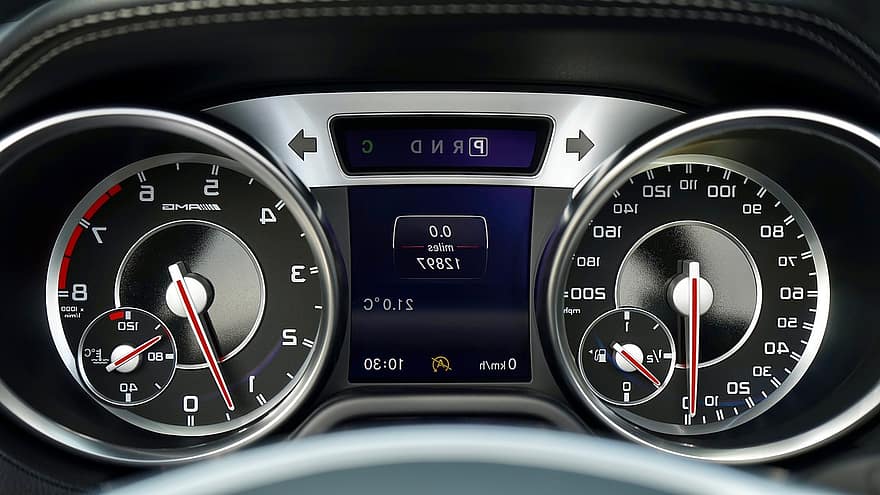Summary
– Speed indicator: small history
– Speed Indicator: current technologies
– Speedometer maintenance
In these times of massive implementation of radars of all types, a vehicle’s speedometer is essential for your driving license’s durability. But, is this speed indicator reliable, and how does it work?
Speed indicator: a short history
Since the invention of the automobile, the need to know one’s speed has always been present, initially out of curiosity and for the sensation of exceeding one’s limits, and then to adapt this speed to road legislation.
Until the 1980s, a cable-driven in rotation by the gearbox allowed this information to be displayed on the dashboard, mechanically driving the speedometer needle using gears.
The gearbox’s output shaft’s speed, proportional to the wheels’ speed, made it possible to know the travel speed (given in km/h).
Speedometer: current technologies
Two possibilities are used today to collect vehicle speed information.
Out-of-box speed
As with cable systems, the information is taken from the gearbox output shaft. Here an electrical sensor is installed on the gearbox, which transforms the gearbox shaft’s rotational speed into an electrical signal (hall effect sensor).
This signal is processed by a computer (ECU), which controls the speedometer pointer through a proportional power supply, or digitally displays the vehicle speed.
Wheel speed
The difference with the previous system lies in taking the speed information: in this case, it is taken directly from the wheels.
The anti-lock braking system sensors, located on each wheel, provide the information and transmit it as an electrical signal to the ECU.
Accuracy
Depending on the solutions adopted, these sensors’ technologies are inductive, hall effect, or magneto-resistive (when subjected to an electromagnetic target, they send a chopped intensity signal alternately from 7 milliamps to 14 milliamps to the computer).
Speedometer maintenance

A qualified technician’s diagnosis of a speedometer malfunction must be carried out on today’s vehicles, as there are many possible causes (sensor, dashboard display, electrical connections, etc.).
In general, the value announced by the speedometer is increased by 5 to 8% compared to the real speed, and this value will not be lower (the goal is to keep a safety margin compared to radar controls).
The only way to verify this information’s accuracy is to compare it to the speed displayed by your GPS, which calculates the current speed using satellite data from GPS points.
Two factors can alter the information provided by your speedometer:
- The tires’ size: it is necessary to take care of an adapted size of the tires. The calculation parameters are based on the wheels’ original size (for example, a reduced wheel diameter will result in a higher speed indication than the actual value).
- Under-inflation of the tires will have the same repercussions because of the wheel radius reduction (the tire being crushed).
Good to know: There are alternatives to the classic speedometer in cars.
Speedometers apps
Some excellent apps on google play tell you of fixed speed cameras found on your way. These apps detail the speed cameras’ location, the type of speed camera installed (red light speed camera, section speed camera, classic fixed speed camera or two-way speed camera, etc.), commissioning date, and the controlled offenses.
That’s it for the speed indicator. Next time your mechanic talks about the speedometer, you’ll know what he is talking about. Please, remember to share this post and leave your comments in the section below.
Find out more on cars and motors here:

